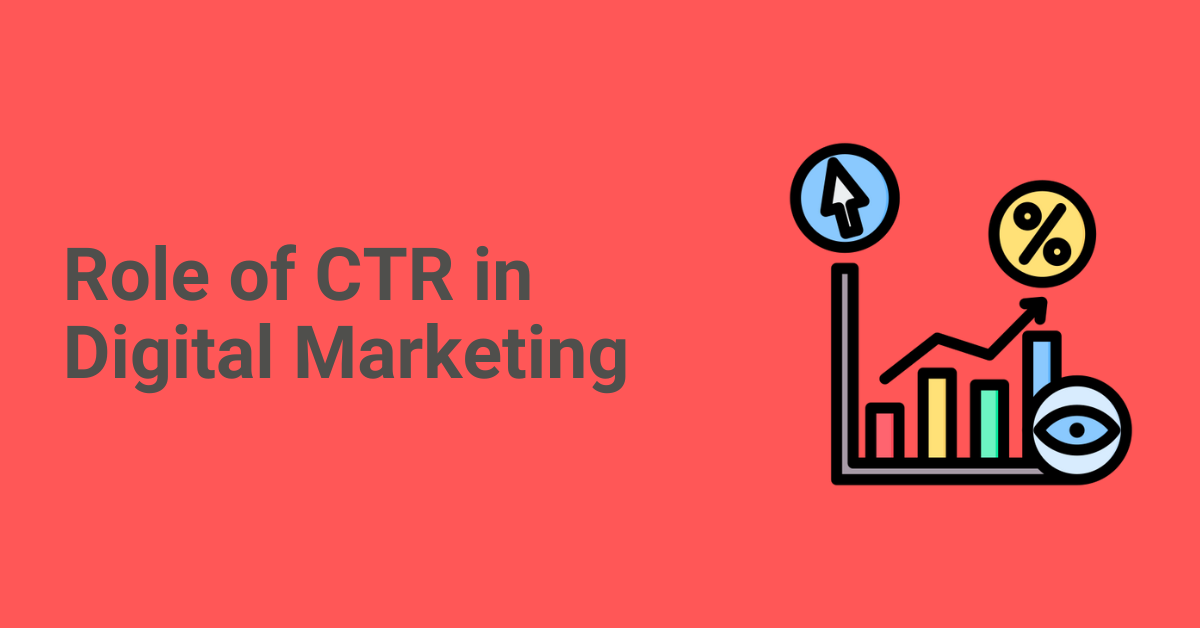In the fast-evolving world of digital advertising, success is often measured by a variety of performance metrics. Among these, Click-Through Rate (CTR) stands out as one of the most crucial indicators of campaign effectiveness. It serves as a bridge between impressions and actual user engagement, providing insights into how well your ad is resonating with your audience.
In this blog, we’ll dive deep into what CTR is, why it matters, and how it shapes the success of digital advertising campaigns.
What is CTR?
Click-Through Rate (CTR) is a metric that measures the percentage of people who clicked on your ad after seeing it.
Why is CTR Important in Digital Advertising?
CTR plays a pivotal role in determining the performance and efficiency of your digital campaigns. Here’s why:
1. Measures Ad Relevance
A high CTR indicates that your ad is appealing and relevant to your target audience. If users are clicking on your ad, it shows that your message is resonating with them.
2. Impacts Quality Score
On platforms like Google Ads, CTR is a key component of Quality Score, which affects:
Ad Placement: Higher CTR ads are more likely to appear in top positions.
Cost-Per-Click (CPC): Higher Quality Scores lower CPC, improving ROI.
3. Helps Optimize Campaigns
By analyzing CTR, marketers can identify which ads or keywords are performing well and which need adjustments.
4. Indicates User Interest
CTR provides insights into how engaging your ad copy, visuals, or offer is. A low CTR could signal that your ad needs refinement to capture audience interest.
5. Impacts Conversion Funnel
While CTR doesn’t directly measure conversions, it’s the first step in the conversion funnel. A higher CTR increases the likelihood of driving traffic to your website or landing page, where conversions occur.
What is a Good CTR?
The definition of a “good” CTR varies based on:
Industry: For example, the average CTR for search ads is around 2%, but it can be higher for niches like legal or travel.
Ad Type: Search ads often have higher CTRs than display ads due to their intent-driven nature.
Platform: Social media platforms like Facebook may have lower CTRs compared to search engines.
Factors That Influence CTR
Several elements contribute to your CTR. Here’s what you should focus on to improve it:
1. Ad Copy
Use compelling, action-oriented language.
Highlight benefits and unique selling points.
2. Visuals
Use eye-catching images or videos in display and social media ads.
Ensure visuals are relevant to the ad message.
3. Call-to-Action (CTA)
A strong CTA encourages users to take action. Examples include “Learn More,” “Buy Now,” or “Get Started.”
4. Audience Targeting
Precise targeting ensures your ad reaches the right audience, increasing the likelihood of clicks.
5. Ad Placement
Test different placements to find where your ads perform best, such as mobile vs. desktop.
6. Keyword Relevance (for Search Ads)
Use highly relevant and intent-driven keywords to attract the right audience.
How to Use CTR for Campaign Optimization
1. A/B Testing
Test different ad headlines, visuals, or CTAs to identify which combinations yield the highest CTR.
2. Refine Targeting
Analyze audience segments to ensure your ads are reaching users most likely to engage.
3. Improve Landing Pages
Ensure the landing page experience aligns with the ad’s promise to maintain user interest post-click.
4. Leverage Analytics
Use platforms like Google Analytics or Facebook Ads Manager to track CTR trends and make data-driven decisions.
5. Adjust Bidding Strategies
Higher CTRs can reduce costs by improving Quality Scores, allowing for better budget allocation.
CTR vs. Other Metrics
While CTR is essential, it should be analyzed in conjunction with other metrics for a complete picture:
Conversion Rate: A high CTR is great, but if clicks don’t lead to conversions, there may be an issue with your landing page or offer.
Cost-Per-Click (CPC): Lower CPC combined with high CTR indicates efficient spending.
Engagement Rate: On social platforms, engagement metrics like likes and shares complement CTR insights.
Common Mistakes to Avoid
Focusing Solely on CTR
While important, CTR is not the end goal. Balance it with metrics like ROI or ROAS.
Neglecting Ad Quality
Don’t rely on gimmicks or clickbait to drive clicks; focus on genuine value.
Ignoring Negative Keywords
For search ads, failing to exclude irrelevant terms can result in wasted impressions and lower CTR.
Conclusion
Click-Through Rate (CTR) is a vital performance metric in digital advertising, offering valuable insights into audience engagement and ad relevance. By focusing on improving CTR, advertisers can enhance their campaign effectiveness, reduce costs, and drive more meaningful traffic to their websites.
However, CTR should not be viewed in isolation. It’s part of a larger ecosystem of metrics that collectively measure campaign success. For a well-rounded approach, marketers must combine high CTRs with strategies that ensure quality traffic, strong conversions, and a positive ROI.
By continually optimizing and adapting, you can harness the power of CTR to build impactful and successful digital advertising campaigns.




